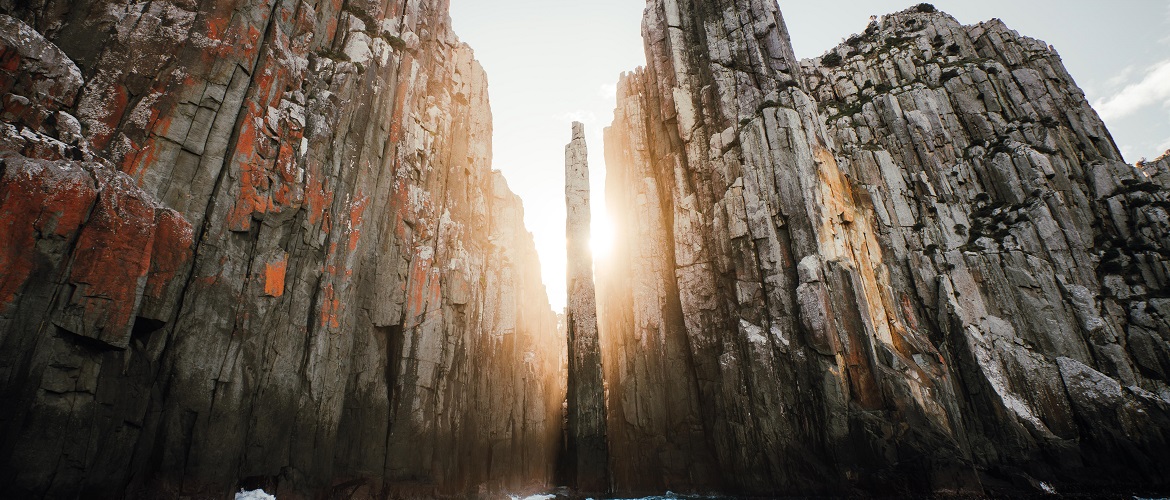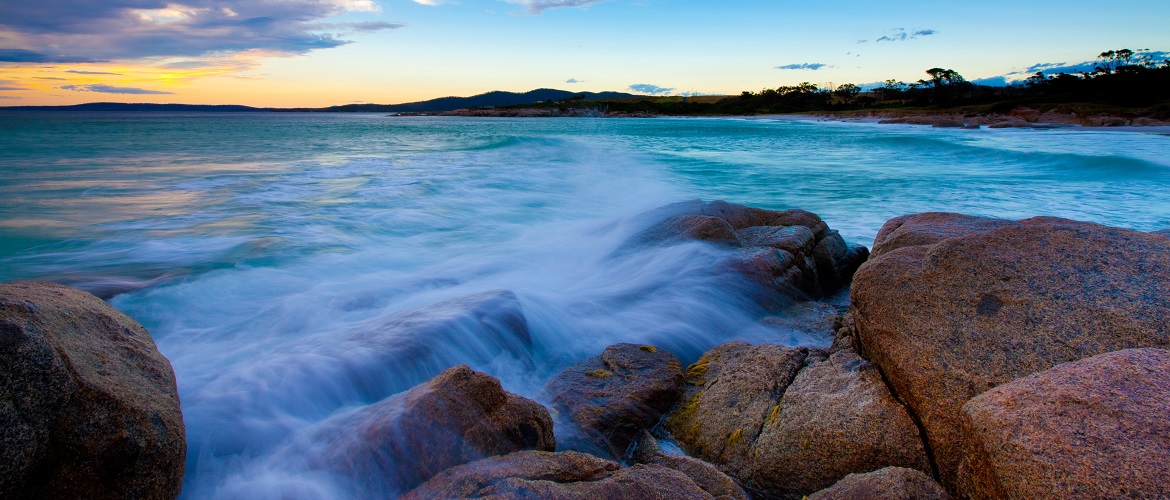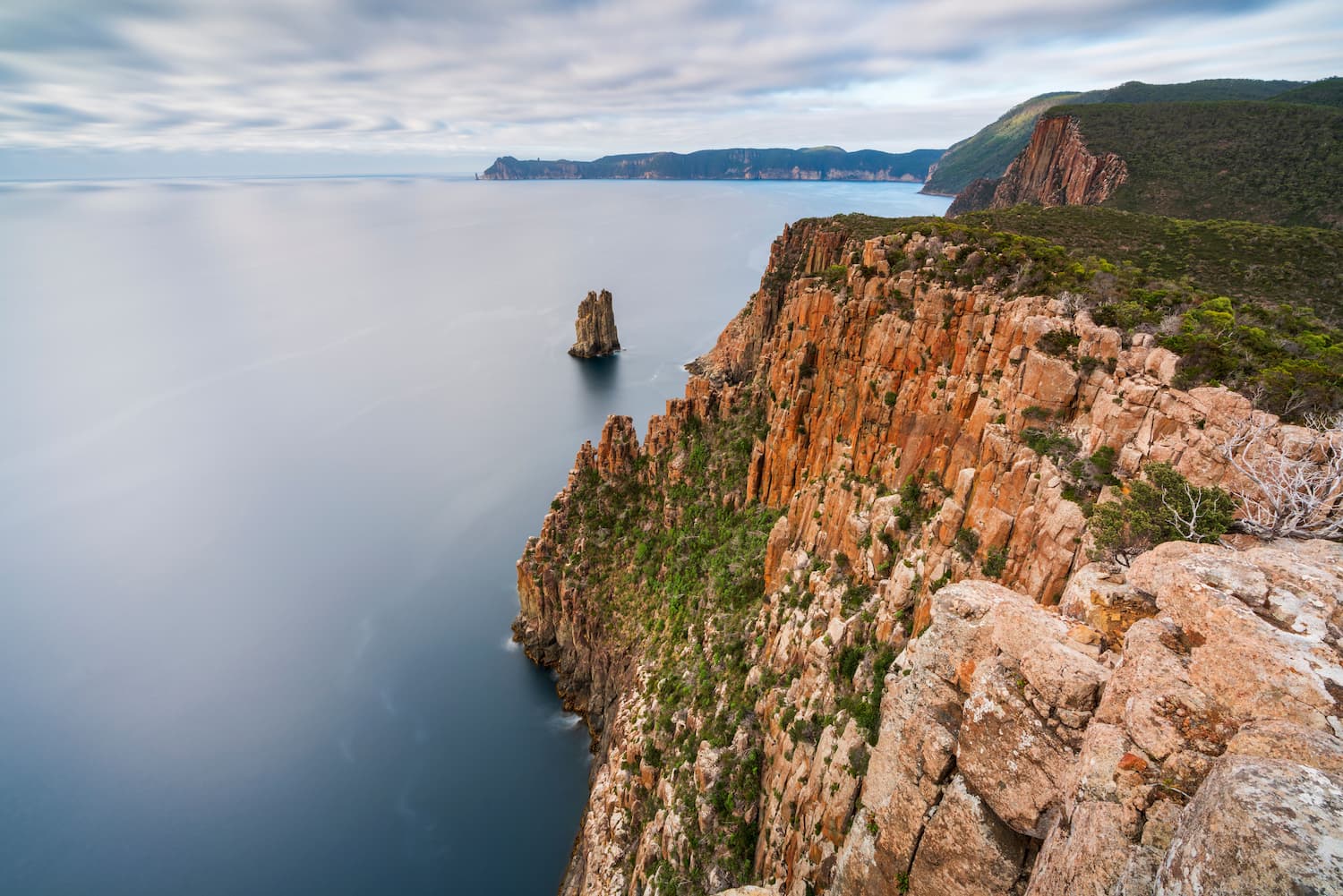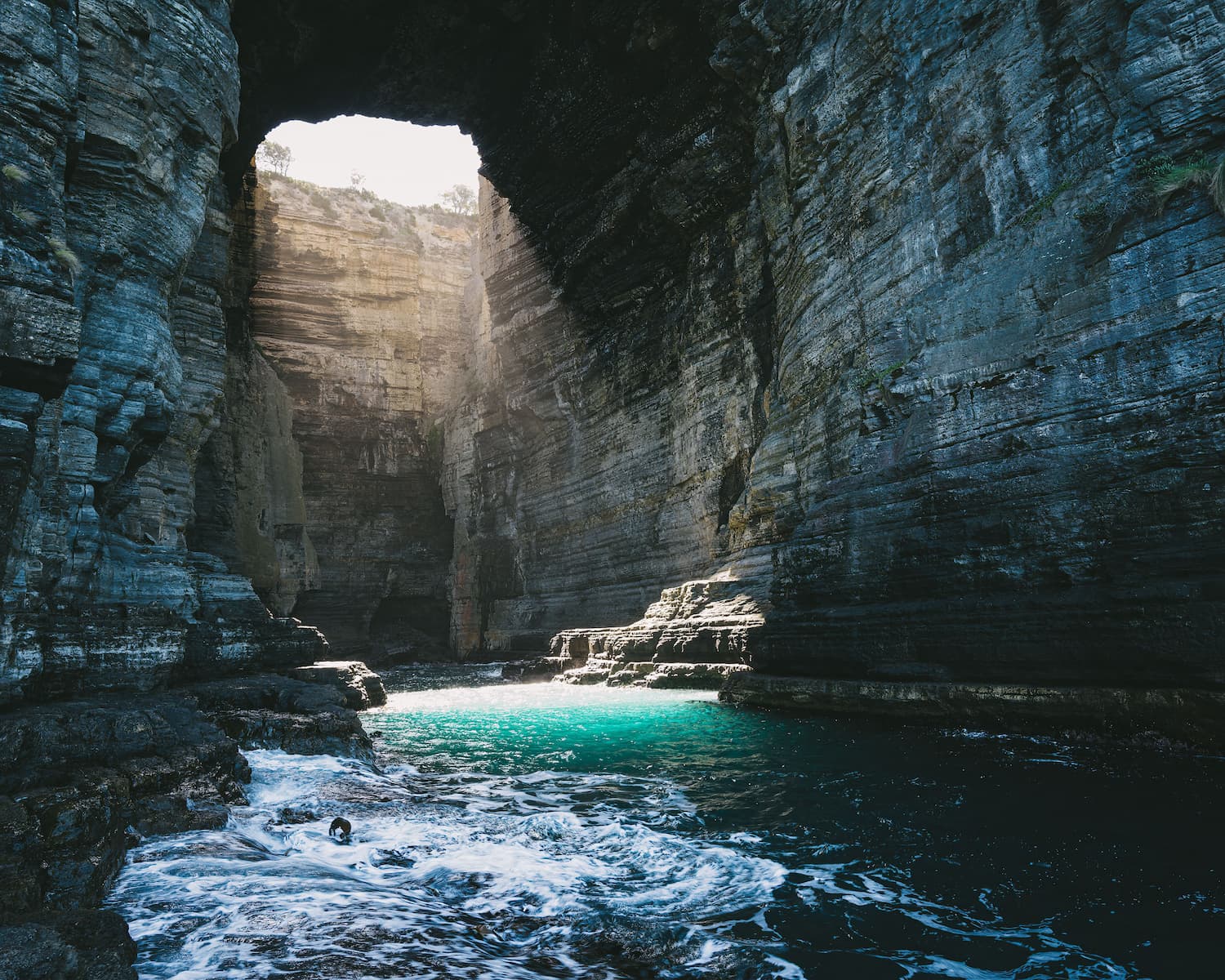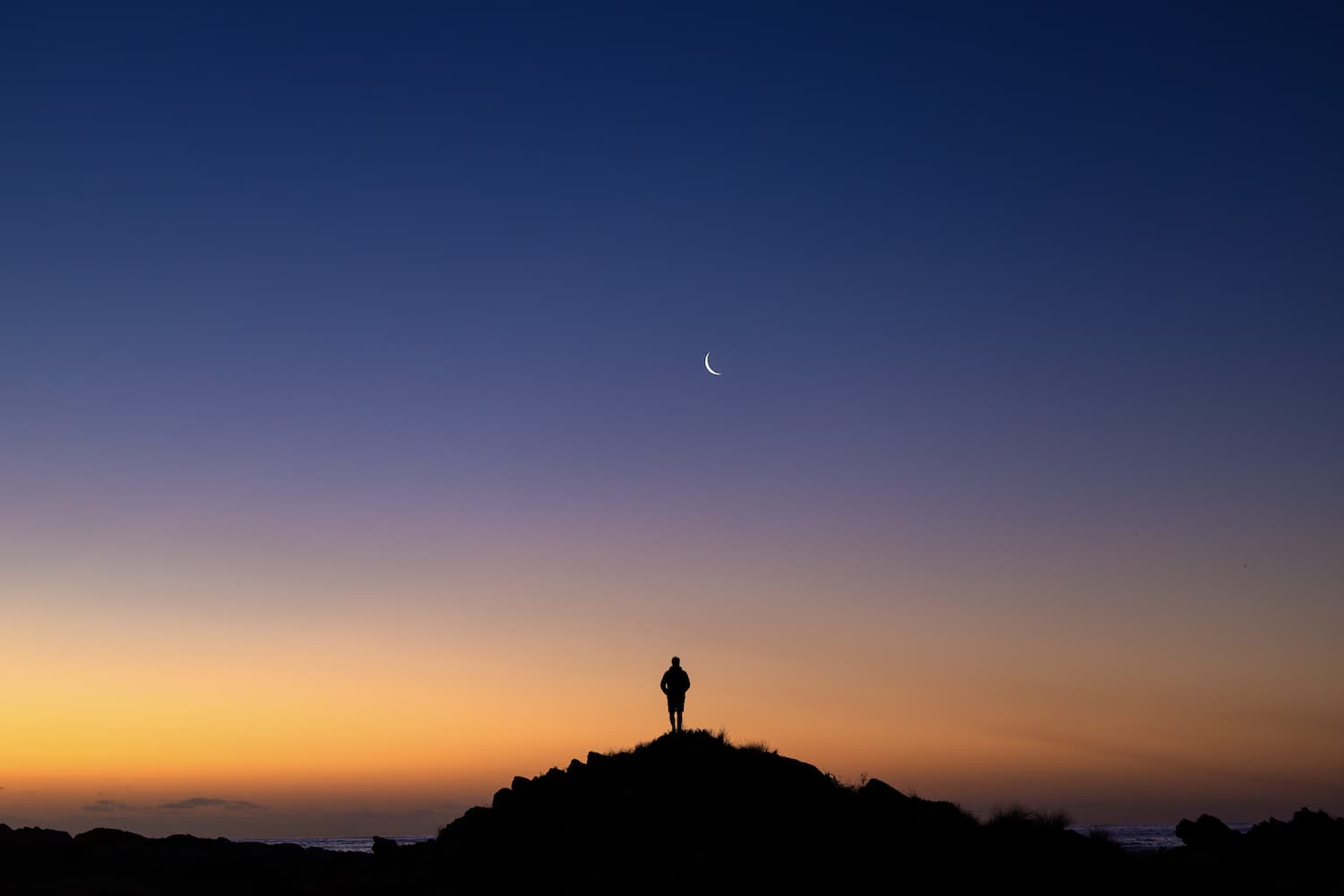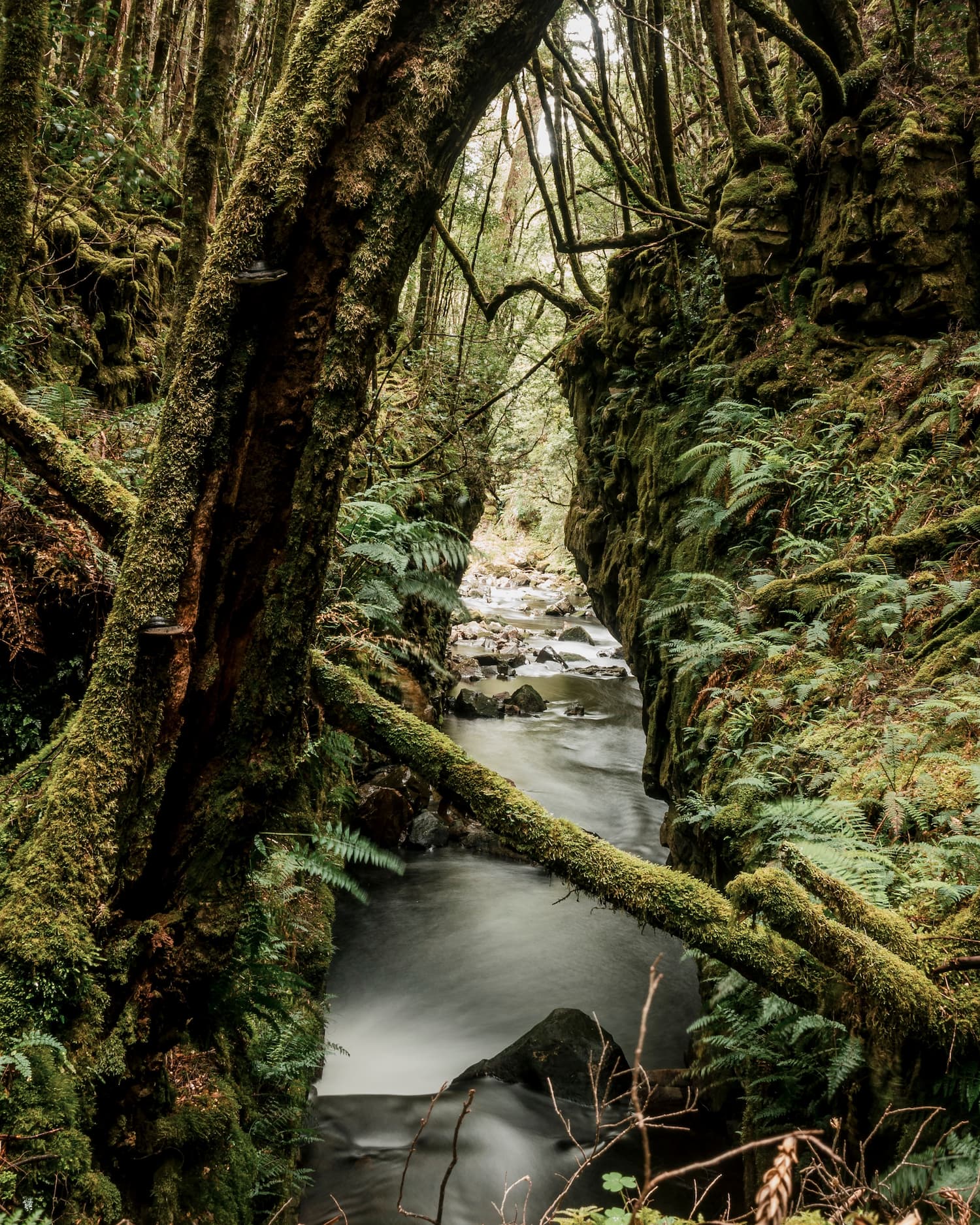Tasmania is a unique island with unspoiled coastal environments, spectacular mountainscapes and boasts Australia’s largest tracts of cool temperate rainforest. With over 1/5 of Tasmania declared World Heritage Area protected, Tasmania really is a true escape from the hustle and bustle of city life.
Tasmania’s Geography
Tasmania is Australia’s only island state and has a landmass of 68,401 km2. It is located at the south east of Australia, and is in the route of the Roaring Forties, strong westerly winds that carry some of the cleanest air in the world to Tasmania’s shores. Tasmania has rugged and jagged landforms and is Australia’s most mountainous state. Tasmania’s largest mountain is Mt Ossa, stands at 1,617 metres tall and is located in one of Tasmania’s most popular National Parks, the Cradle Mountain-Lake St Clair National Park. The Central Highlands covers Tasmania’s central and western regions and is known as an isolated wilderness with fishing, walking and climbing just some of the activities on offer. The land more to the east of Tasmania is flat and predominately used for agriculture, including some of Tasmania’s prime wine regions and produce farms. The south west of Tasmania boasts large, untouched rainforests and holds some of the last temperate rainforests in the Southern Hemisphere. It includes trees such as myrtle, Leatherwood, Celery-top pine, sassafras, Huon pine, pencil pine and King Billy pine. Wildlife such as the long-tailed mouse, ringtail possum, pademelon, spotted-tailed quoll and the dusky antechinus are generally quiet in the forests allowing for a majestic quiet as you explore one of the popular walking tracks in the region. The rainforests are also used by bee keepers to produce Tasmania’s popular leatherwood honey. Tasmania’s largest temperate rainforest area is the Tarkine in the state’s North West and covers approximately 3,800 square kilometres of land. With its rugged topography, Tasmania has many rivers, including the Derwent River that flows south to Hobart; the Tamar River that flows north from Launceston; the Mersey River that flows north to Devonport, and the Franklin and Gordon Rivers that flow west to Strahan. Many of Tasmania’s rivers offer scenic river cruises, most notably the cruises at Arthur River, Gordon River, Derwent River and Tamar River. Cruising the coast of the island is also popular with visitors, with Wineglass Bay, Tasman Island and Bruny Island.
Tasmanian Wilderness World Heritage Area
The Tasmanian Wilderness World Heritage Area protects one of the last true wilderness regions on Earth and encompasses a greater range of natural and cultural values than any other region on Earth.
The Tasmanian Wilderness World Heritage Area covers approximately 1,584,000 hectares and represents about 1/5 of the area of the island state of Tasmania. It protects vast tracts of high quality wilderness, which harbours a wealth of outstanding natural and cultural heritage.
The area is formally recognised through World Heritage listing as being part of the natural and cultural heritage of the world community. The core area was inscribed on the World Heritage List in 1982 on the basis of all four natural criteria and three cultural criteria, satisfying more criteria than any other World Heritage property on Earth.
Tasmanian National Parks
Tasmania’s National Parks protect some of the most beautiful and diverse landscapes and habitats in Australia. They offer visitors a wide choice of opportunities to discover dramatic landscapes, from highlands carved by glaciers to quiet, solitary beaches; from cool, silent rainforests to colourful, alpine wilderness wildflowers. Tasmania’s 19 national parks, 17 of which are accessible, encompass a diversity of unspoiled habitats and ecosystems, which offer refuge to unique, and often ancient, plants and animals found nowhere else on Earth.
Many parks have contemporary visitor centres where you can find out more about each park’s wildlife, history and geology.
Please note:
• Entry fees apply for entry into the national parks,
• Dogs and other pets are not allowed in national parks.
• Many areas in Tasmania’s national parks do not have rubbish bins available. Please be prepared to carry your rubbish back out of the park at the end of your stay.
For visitors to the state, the Tasmanian National Parks Holiday Pass grants entry to all our national parks for up to eight weeks and provides a great saving for travellers who plan on visiting Tasmania’s unique and majestic national parks. The National Parks Pass allows you to explore the best of Tasmania, while helping us protect national parks and improve their facilities. Passes are $89.50 and are valid for one vehicle and up to eight people.
Tasmania’s National Parks:
Ben Lomond – Dolerite cliffs and a stark alpine plateau.
Cradle Mountain*^ – Tasmania’s iconic wilderness destination.
Douglas-Apsley – Protects rich and diverse dry sclerophyll forests.
Freycinet – The jewel of Tasmania’s stunning coastline.
Hartz Mountains* – Mountain walks and wildflowers.
Kent Group – The Kent Group is as beautiful as it is remote.
Lake St Clair*^ – A wilderness carved by glaciers.
Maria Island – A tranquil island with a unique heritage.
Mole Creek Karst* – A network of sparkling limestone caves.
Mt Field Tall – trees, waterfalls and alpine tarns.
Mt William – Long lonely beaches, rich wildlife and plant life.
Narawntapu – Untouched beaches and abundant wildlife.
Rocky Cape – Aboriginal heritage, shipwrecks and more.
Savage River – A remote, wilderness park of temperate rainforest.
South Bruny – Spectacular coastal scenery.
Southwest* – The heart of the Tasmanian wilderness.
Strzelecki – Home of rare flora and fauna on Flinders Island.
Tasman – Spectacular sea-cliffs, pristine beaches and coastal walks..
Walls of Jerusalem* – Rich alpine flora set among rugged mountains.
Franklin-Gordon Wild Rivers* – Dramatic peaks, rainforest, wild rivers and gorges.
* These parks form part of the Tasmanian Wilderness World Heritage Area.
^ Part of the Cradle Mountain – Lake St Clair National Park.
Information courtesy of www.parks.tas.gov.au.

